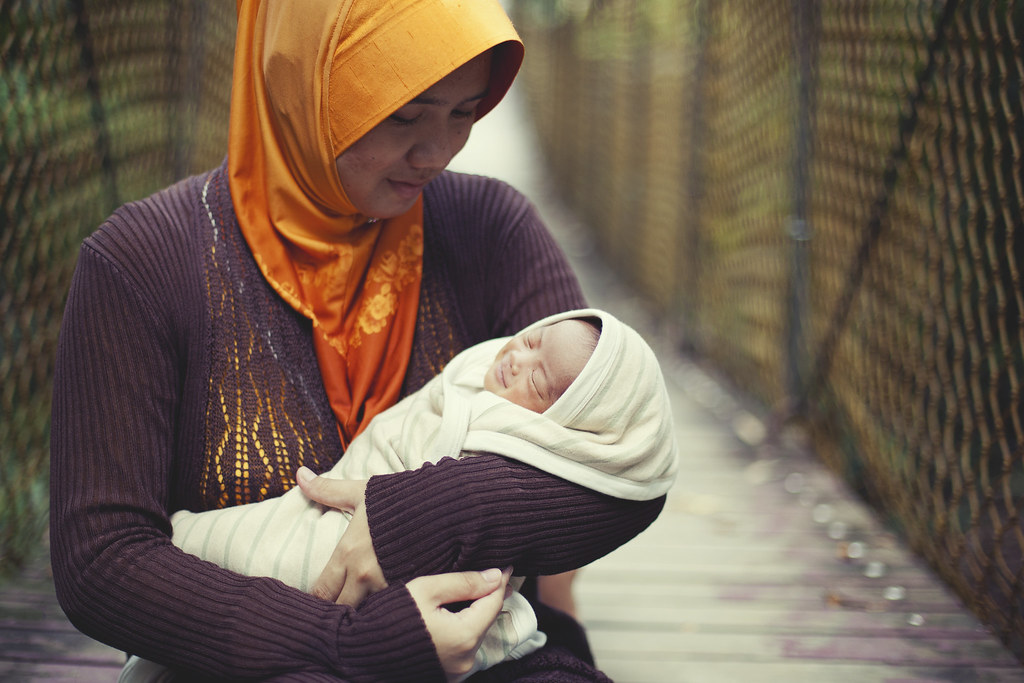Basic Photography Tips | Creative Use of Depth of Field
© 2011 Wazari Wazir | Creative Use of Depth of Field | Motherhood | f1.8 | 1/640 | 50mm Lens
Basically Depth of field (DOF) is the amount of your image that’s in focus. It is also refers to the range of distance that appears acceptably sharp. It varies depending on lens type, aperture and focusing distance. Depth of field (DOF) also is the distance in front and beyond the object that is in focus. Generally speaking also, if we want to get a greater Depth of Field, which is to have sharp image from foreground to background, you need to use smaller aperture like f8 and above to get everything sharp or in focus.
On the other hand if we use wider aperture like f2.8 or below like f1.2, you will have a very shallow Depth of Field, only the main subject which is in focus will be sharp and leaving others blur or out of focus like the picture of my wife holding Raphael above.
If we have basic understanding on how depth of field works, we can use it to our advantage or to use it creatively. Normally for landscape or architectural photographers, they like to use smaller aperture for greater depth of field, since they wanted everything to be sharp, that’s why most of them using a tripod to get the shot. The reason why landscape photographers using tripod is that, when they use smaller aperture with low ISO like ISO 100, they have to deal with slow shutter speed which is not practical to take the picture handheld, which prone to camera shake, so they have to use tripod to prevent camera shake.
For portrait photographers, they usually will shoot their subject with wide aperture like f2.8 to isolate their subject from background. Why would portrait photographer do that? Simply because unlike landscape or architectural shot, the important element in the portrait shot is the person that we photograph, so that we need to make sure that the subject stand out from the background, to be the centre of attraction and by using big aperture like f2.8 or f1.2, the photographer manage to make the subject stand out from the background, the subject is sharp and gradually everything become blur towards the background.
By doing so, your picture will appear to have “depth”. In the photograph above, I also combine the element of “leading lines” to create more depth to the photograph, so your eyes will be drawn from the the foreground to the background with the help of those leading line which is the hanging bridge at local public park.
The things that we need to pay a very close attention when shooting portrait at wide aperture is the shutter speed. Since wide aperture create shallow depth of field, we need to be extra careful when choosing a shutter speed. If you use slow shutter speed like 1/100 or below and your hand is not steady, don’t be surprise if the picture that look sharp in the viewfinder turn out to be blur after you take the picture and view it on your camera LCD panel, that’s is the result of camera shake.
To prevent that, always use fast shutter speed. Some photographers like to call it “the rules of thumb” when using certain type of lens and shooting it hand held. Basically if you shoot with 50mm lens hand held, you should use aperture 1/50 and above or if you use 70-200mm lens handheld and shooting at 200mm range, you should use shutter speed of 1/200 and above to prevent camera shake. That is just a guide line, if you can double the amount the better but it is also depending on the lighting condition.
For me I rarely use shutter speed below 1/100 if I use 50mm lens at f2.8 or below. For the photograph above I shutter speed of 1/640 to make sure my focus is tack sharp and I highly suggest to those of you who use 70-200mm and shooting at 200mm range to use shutter speed at least 1/300 to be safe. I know some lens have build in VR or IS, Vibration Reduction or Image Stabilization built in into the lens but we should never rely on that mechanism exclusively. IS will help you to prevent camera shake shooting at slower shutter speed but still it depend on how you handle the camera, you still need to hold the camera steady, control the breath and take the shot but to get a super sharp image, nothing can beat using very fast shutter speed if shoot handheld.
It is good to pay attention on how your camera equipment works or behave so that you can use it to your advantage. Great artist must know his tools well so that he can concentrate on his craft and not to worry so much about the technical aspect of their equipment. Understand the concept behind Depth of Field, and use it creatively to your advantage. Understanding how your photography equipment work and how “To Make it Work” are two different things. Creative photographers know how his equipment work and how “To Make it Work”to really express his vision.
* About the editing ; I use one of the technique in my Photoshop Tone Secret eBook to get the tone, you can find about it from the banner below…
Get The Secret HERE


One Comment
Alan Chin
Great sharing here for the newbies photographer. Keep it up !